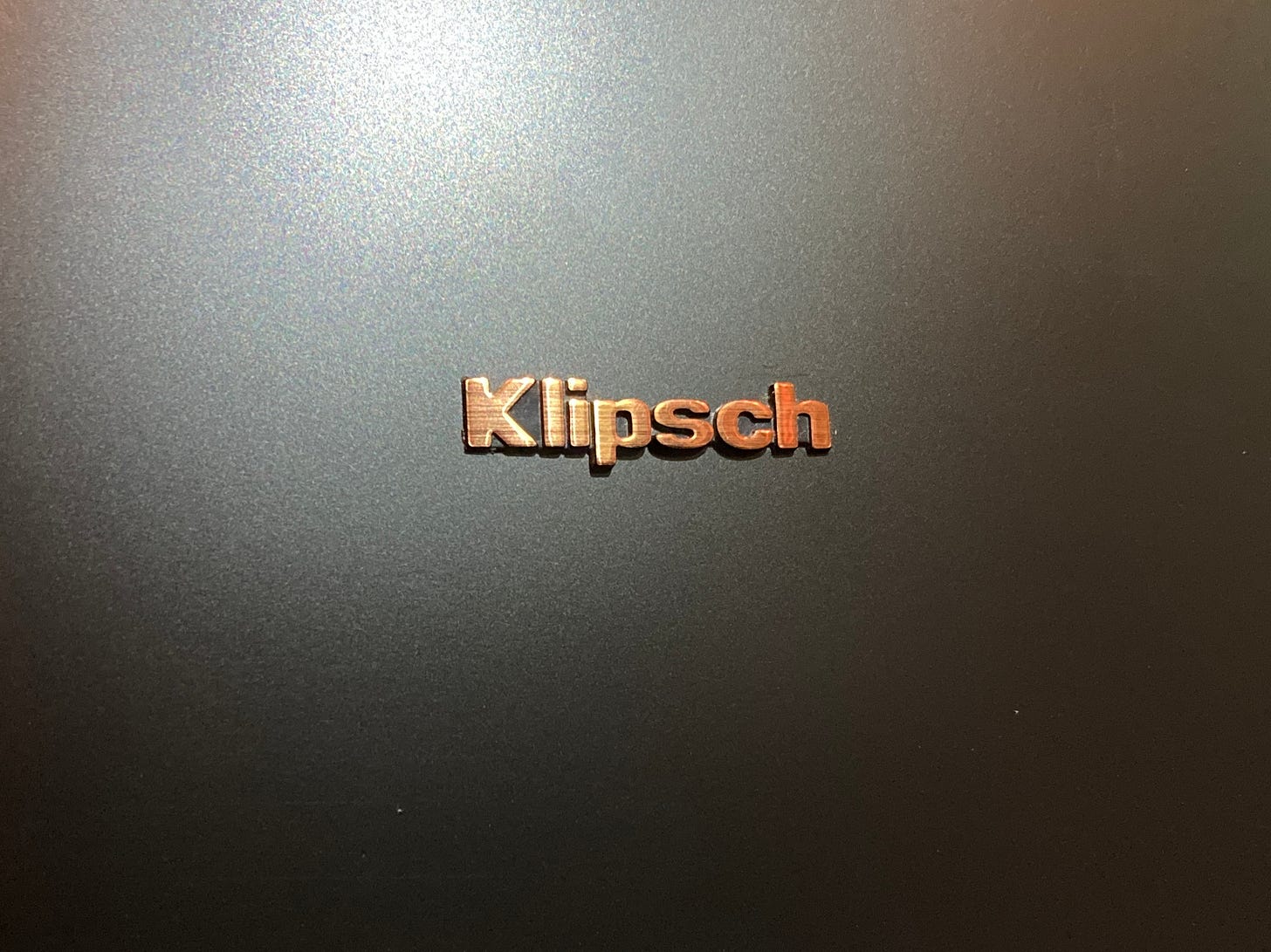In early 2020, before I knew there’d be a pandemic that kept us all indoors and immersed in home entertainment for a year, I invested in the best hi-fi gear I’d ever owned. Nothing extravagant - just carefully selected, high-value gear that could deliver the tangible, impactful and accurate sound I think I deserve after decades of serious musical study and enjoyment. After a good bit of research, I went with amplifiers from Emotiva (based in Franklin, TN) and some nice floor-standing speakers from the French company Focal.
I’d always had a stereo, but this was a huge leap forward. Instruments, particularly piano, became more focused and resonant. Drums had more bite and definition. Vocals were richer and more corporeal. The sonic illusion of musicians arrayed in three dimensional space, which we call soundstage, was much enhanced. It was far from the best system in the world, but it was authentic hi-fi, and it elevated my relationship with my record collection and with the streaming music I listen to daily.
I try not to be that audiophile, always obsessing over the next thing, but a certain amount of, let’s say, curiosity does filter in. If it can be that good, then how good could it get? What’s next? What if? So after more than two years, I began thinking about how to experience a different set of speakers in here, without just blindly spending more money, because one remarkable truth of audio is that cost and quality, while vaguely correlated, are not inextricably linked. I’ve learned that there’s a sweet spot in the upper three figure range for almost any component where, if you choose well, you can get products that equal or best others two to three times as expensive. Which leads me to my new Klipsch RP-6000s.
About three years ago, the industry started raving about a stand-mounted or “bookshelf” speaker from Klipsch called the RP-600, including one famous audio writer who said “a speaker this inexpensive isn't supposed to be this good. It isn't rational.” Because my room is large enough, I got excited about the larger, floor-standing version of the 600s, the 6000s, so named because they have two six-inch woofers. Because I like buying local if possible, I visited HiFi Buys on Nolensville Rd where I was able to listen to music of my choice on them, through an amplifier that matched the specs of mine (very important). You can’t really tell what speakers will sound like in your room in somebody else’s space, but there was no doubt that these speakers had personality and energy. When my guy told me they had one and only one pair left in my preferred walnut finish, I took it as a sign. Plus, they were a fantastic deal, about which more in a minute.
Klipsch is well-known in audio circles, but I had the entirely wrong idea about them. I figured it was a venerable old German brand, so I was amazed to learn about a year ago that it has been based since its founding in 1946 in Hope, AR, the hometown of Bill Clinton and nowhere that anybody would confuse with a tech hub. This fellow Paul W. Klipsch, an acknowledged eccentric visionary, pioneered a type of speaker known as horns. They’re a whole wild subculture of hi-fi let me tell you, and it’s more than I can get into here. My new speakers use a horn for the tweeter, while the main drivers are cones. I’d say they were traditional cones, but they’re made of spun copper and ceramic so they look absolutely incredible. The bass comes out a horn-shaped vent or port in the back and bounces off the wall, filling the room. One can burrow into the design and engineering concepts at the website, but the simple story is that this is a unique company with 75 years of experience on the global stage that builds their products in America. And yes, they sound sensational.
Starting with that bass, it’s worth just dwelling on how smart their concept is. My Focal speakers made their cabinets with only a smallish inner chamber, but these RP-6000s are quite large, a 17-inch deep box designed to take the low compressed air inside and port it out the back. These play far lower and cleaner than the Focals. String bass is one of my favorite sounds, and these can trick you into thinking there’s one in the room. The mids and highs are airy and cleanly defined as well, and the horn tweeter is really elegant without any harshness or peaks. I’m especially impressed by how cymbals sound. Something about the semi-metallic material of the drivers and the responsive tweeter really spotlights rides and crashes. The speakers are designed to generate a lot of output with lower power, which leads them to sound quick and propulsive, like they’re pushing the band out into the room, invading my personal space in the best way. I’ve been listening to a lot of bass clarinet music lately, mostly my man Bennie Maupin, and that instrument, so rich and warm and large, sounds weirdly tangible on these things. Voices are so large and human. Name a singer you love and we can summon him or her instantly.
As I suggested, these substantial and very well made loudspeakers cost me less than the Focals and I’ll make money when I sell the old ones. Klipsch has recently released an upgrade to the full RP model line, so the older model can be had at a steep discount. I got away clean for $750 with tax for the pair, and as the writer said, it’s kind of unreasonable. I highly recommend looking for dealers selling remainder stock of discontinued models. They were great when they hit the market and they’re great now. I love listening to these Klipsch speakers. I love looking at them. I love the story. So I’m good. Don’t tempt me with anything better. For now…





